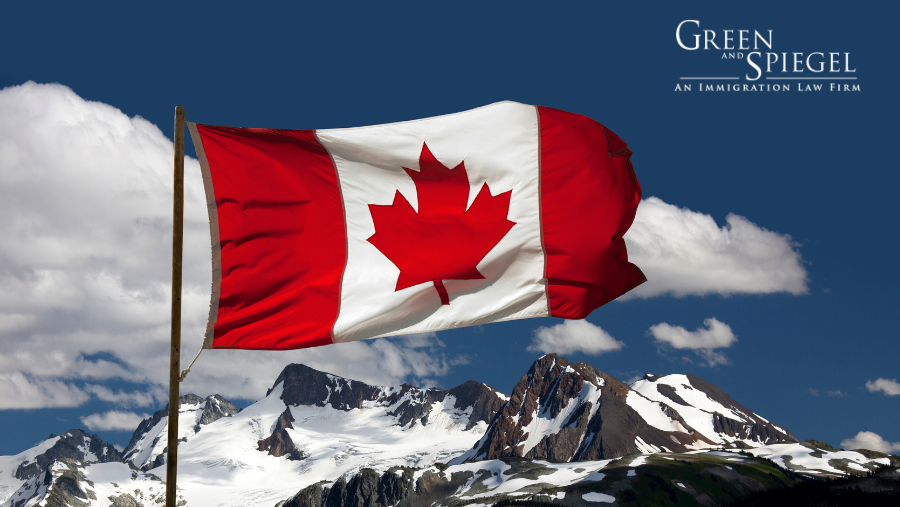THE SAFE THIRD COUNTRY AGREEMENT – BACKGROUND
The Canada-US Safe Third Country Agreement (“STCA”), part of the U.S.-Canada Smart Border Action Plan[1], was signed on December 5, 2002 and has been in force since December 29, 2004.[2] The stated purpose of the STCA is to allow the U.S. and Canada “to more effectively manage the flow of refugee claimants.”[3] The 30 point Action Plan sets out to coordinate Canadian and U.S. immigration, including emphasizing the need to stop ‘forum shoppers’—individuals who may attempt to apply for refugee status in both Canada and the U.S.[4]
In an attempt to stop this ‘forum shopping’, under the STCA and its enabling Canadian legislation, asylum seekers are typically required to claim asylum in the first ‘safe’ country that they enter. According to section 159.3 of the Immigration and Refugee Protection Regulations, the U.S. is considered a ‘safe’ country for the purposes of the Immigration and Refugee Protection Act (“IRPA”).[5]
This means that if an individual first arrives in the U.S. at an official land port of entry, they must claim asylum there, rather than in Canada. The same is true for an individual that first arrives in Canada at an official land port of entry—they must claim asylum in Canada and are barred from claiming asylum in the U.S at official land ports of entry. An exception to this general prohibition is that individuals are permitted to enter into Canada from the U.S. and claim asylum if they enter Canada ‘between’ official land ports of entry—they are not caught under the STCA return back provisions and are able to claim asylum in Canada.
CANADA APPEALING RECENT FEDERAL COURT DECISION ON THE STCA
On 22 July 2020, the Federal Court of Canada released its decision of Canadian Council for Refugees v Canada[6], invalidating the provisions which enacted the STCA on the basis that they violate section 7 of the Canadian Charter of Rights and Freedoms [Charter].[7] The impact of this decision is that the Canadian government cannot return asylum seekers to the U.S. without infringing on the constitutional rights of life, liberty and security of the person.[8] However, the Court suspended the declaration of invalidity for 6 months, to allow the Canadian government to respond.[9]
In rendering this decision, the Federal Court pointed to evidence of the extensive use of detention of asylum seekers in the United States, and the increased likelihood of deportation to countries where there was a high risk of persecution for these asylum seekers. Justice McDonald for the Court found that “…imprisonment and the attendant consequences are inconsistent with the spirit and objective of the STCA and are a violation of the rights guaranteed by section 7 of the Charter.”[10] Justice McDonald went further by stating that “…the risk of detention in the United States for the sake of ‘administrative’ compliance with the provisions of the STCA cannot be justified”.[11] As such, the Court found that the practice of returning asylum seekers from Canada to the U.S., even though this administratively adheres to the STCA, violates their constitutional rights under section 7 of the Charter.[12]
On August 21, 2020, Bill Blair, Minister of Public Safety and Emergency Preparedness, released an official statement that the government of Canada would be appealing Canadian Council for Refugees. Among other factors, Mr. Blair cited the following reasons for the Canadian government’s decision to appeal the case:
[…] [T]here are factual and legal errors in some of the Federal Court’s key findings. There are important legal principles to be determined in this case, and it is the responsibility of the Government of Canada to appeal to ensure clarity on the legal framework governing asylum law.[13]
The STCA will remain in effect pending the result of the government’s appeal, meaning that we will have to wait months, if not years, to find out the future of the STCA and its impact on refugee claimants seeking to enter into Canada.
[1] U.S. Department of State, “U.S.- Canada Smart Border/30 Point Action Plan Update”, 6 December 2002, online: <https://2001-2009.state.gov/p/wha/rls/fs/18128.htm>, [Action Plan].
[2] Immigration, Refugees and Citizenship Canada (IRCC), “Canada-U.S. Safe Third Country Agreement”, IRCC (2016), online: <https://www.canada.ca/en/immigration-refugees-citizenship/corporate/mandate/policies-operational-instructions-agreements/agreements/safe-third-country-agreement.html>.
[3] Agreement between the Government of Canada and the Government of the United States of America for the Cooperation in the Examination of Refugee Status Claims from Nationals of Third Countries, 5 December 2002, online: <https://www.canada.ca/en/immigration-refugees-citizenship/corporate/mandate/policies-operational-instructions-agreements/agreements/safe-third-country-agreement/final-text.html>.
[4] Action Plan, supra note 1.
[5] Immigration and Refugee Protection Act, S.C. 2001, c. 27, s 101(1) e; Immigration and Refugee Protection Regulations, SOR/2002-227, online: <https://laws-lois.justice.gc.ca/eng/regulations/sor-2002-227/>, [Protection Regulations], s 159.3.
[6] Canadian Council for Refugees v Canada (Immigration, Refugees and Citizenship), 2020 FC 770 [Canadian Council for Refugees].
[7] Ibid at para 162.
[8] Ibid at para 81.
[9] Ibid at para 163.
[10] Ibid at paras 10, 138-140.
[11] Ibid at para 138.
[12] Ibid at paras 138-140.
[13] Public Safety Canada, “Government of Canada to Appeal the Federal Court decision on the Safe Third Country Agreement” (Government of Canada, August 21, 2020) online: <https://www.canada.ca/en/public-safety-canada/news/2020/08/government-of-canada-to-appeal-the-federal-court-decision-on-the-safe-third-country-agreement.html>.




